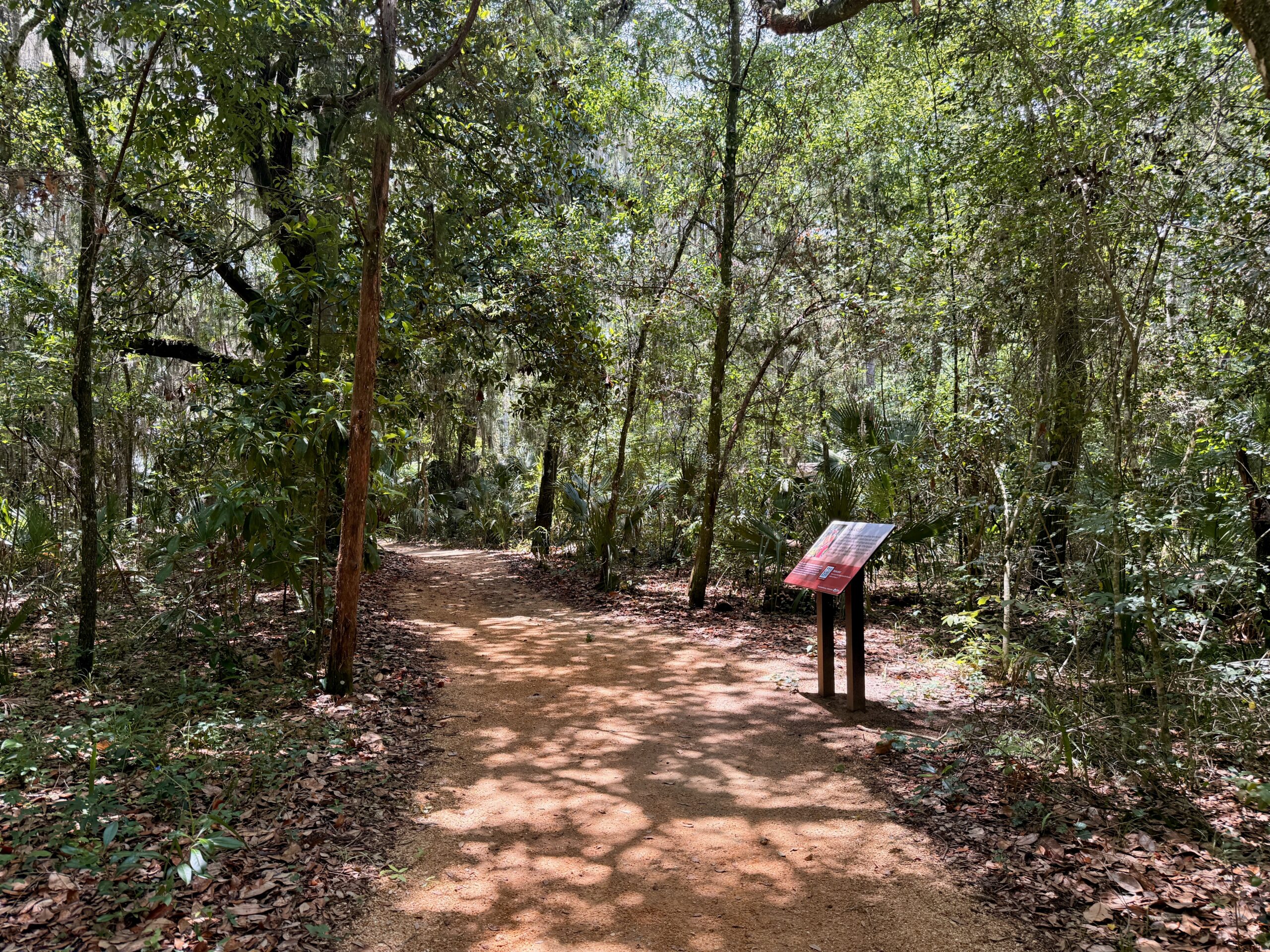Juneteenth in Florida: Fort Mose and the Journey to Freedom
Walking through Fort Mose State Park is a powerful way to reflect on Juneteenth—not just as a celebration of emancipation, but as part of a longer journey toward freedom. This historic site, located just north of downtown St. Augustine, tells a story of resilience and liberation that began long before the Emancipation Proclamation or the events of June 19, 1865.
Words and Photographs by Johanna Pryor
Live Wildly Social Media Coordinator
A Legacy of Liberation
Fort Mose marks the establishment of the first legally recognized free Black community in what is now the United States.
Founded in 1738, it served as a sanctuary for formerly enslaved Africans who escaped British colonies and gained freedom under Spanish rule. Nearly 130 years before slavery was abolished in the U.S., the residents of Fort Mose embodied the fight for liberty and self-determination. Their courage is a reminder that the struggle for freedom is a continuous, collective effort.
The New Fort: A Living History
Earlier this year, the newly reconstructed Fort Mose Historic Park opened to the public, offering a vivid and emotional window into the past.

Inside, I met a woman dressed in 18th-century attire who brought the history of the fort to life with infectious energy. She described scenes of African, Indigenous, and Spanish people living side by side—trading, arguing, growing food, and raising children. She pointed out recreated pottery, a deck of playing cards, sacks of oranges, bowls of corn, and I was pleasantly surprised to see one of my favorite childhood games sitting on the wooden table…Mancala!
I wondered if someone else’s older brother taught them how to play this game, the same way mine did.
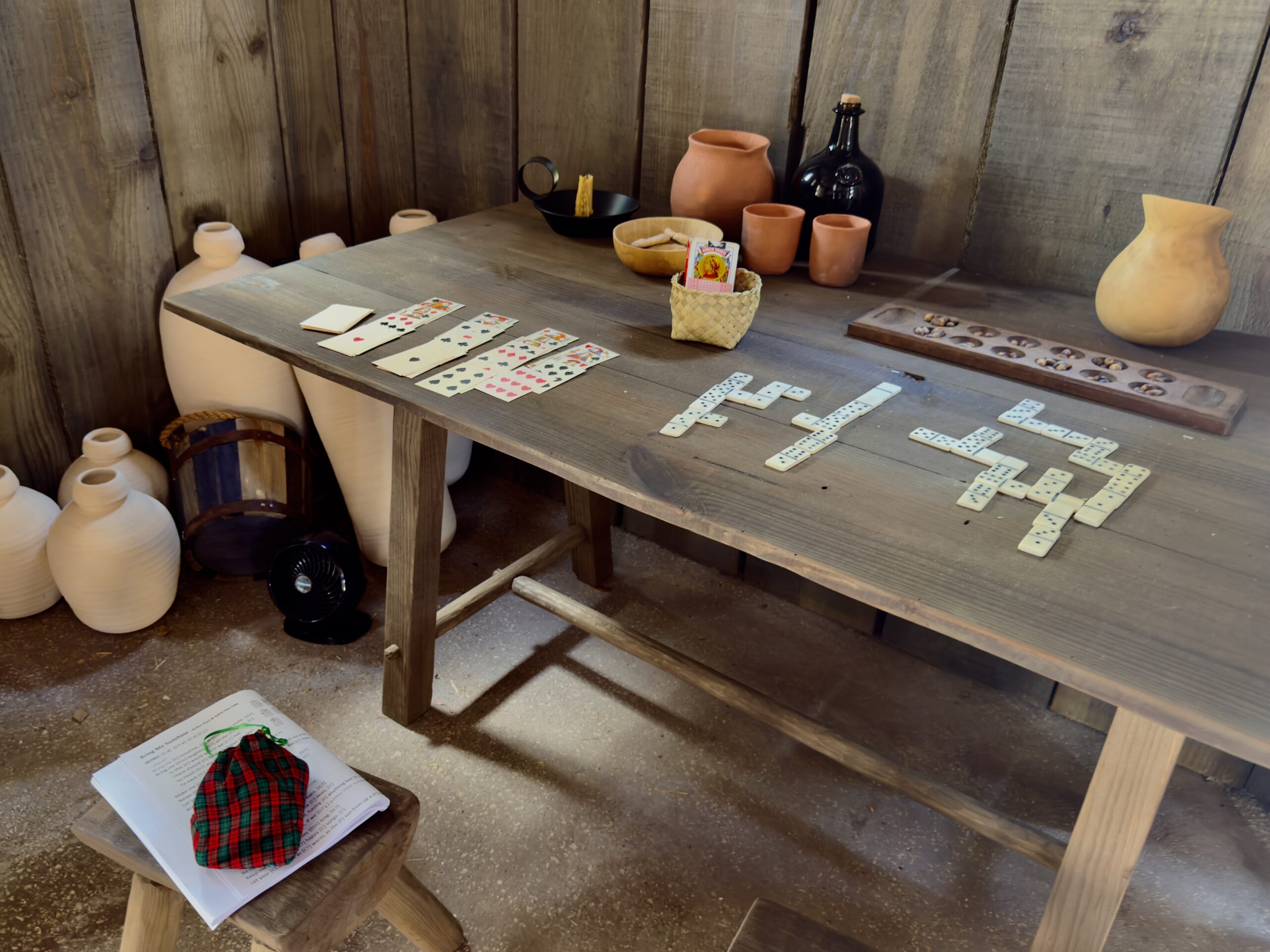
The reconstructed fort is more than a historical structure; it’s a bridge between past and present.
She explained how the community at Fort Mose thrived despite its challenges. While primarily a military outpost, it was also home to Indigenous and Black women who built businesses, grew food, and created a local economy. They were the backbone of a community that found ways to survive and flourish in pursuit of freedom.
History came alive—not as dates and facts, but as people. People with dreams, struggles, and relationships, familiar to our own today.
Standing inside, surrounded by the stories of those who risked everything for freedom, is a deeply moving experience—especially in the context of Juneteenth.
Walking the Path to Freedom
Behind the new fort is a woodland trail, quiet and dappled in sunlight. I found myself alone, walking slowly as light filtered through the leaves and signs along the path helped me imagine what this same journey would have been like centuries ago.
Enslaved people seeking freedom had to navigate Florida’s wild terrain to reach Fort Mose—often traveling through dense forests, swamps, and rivers. They would find allies with the Yamasee tribe, who had similar stories of being forced to travel south to escape the British. The land was both a barrier and a passage to freedom.
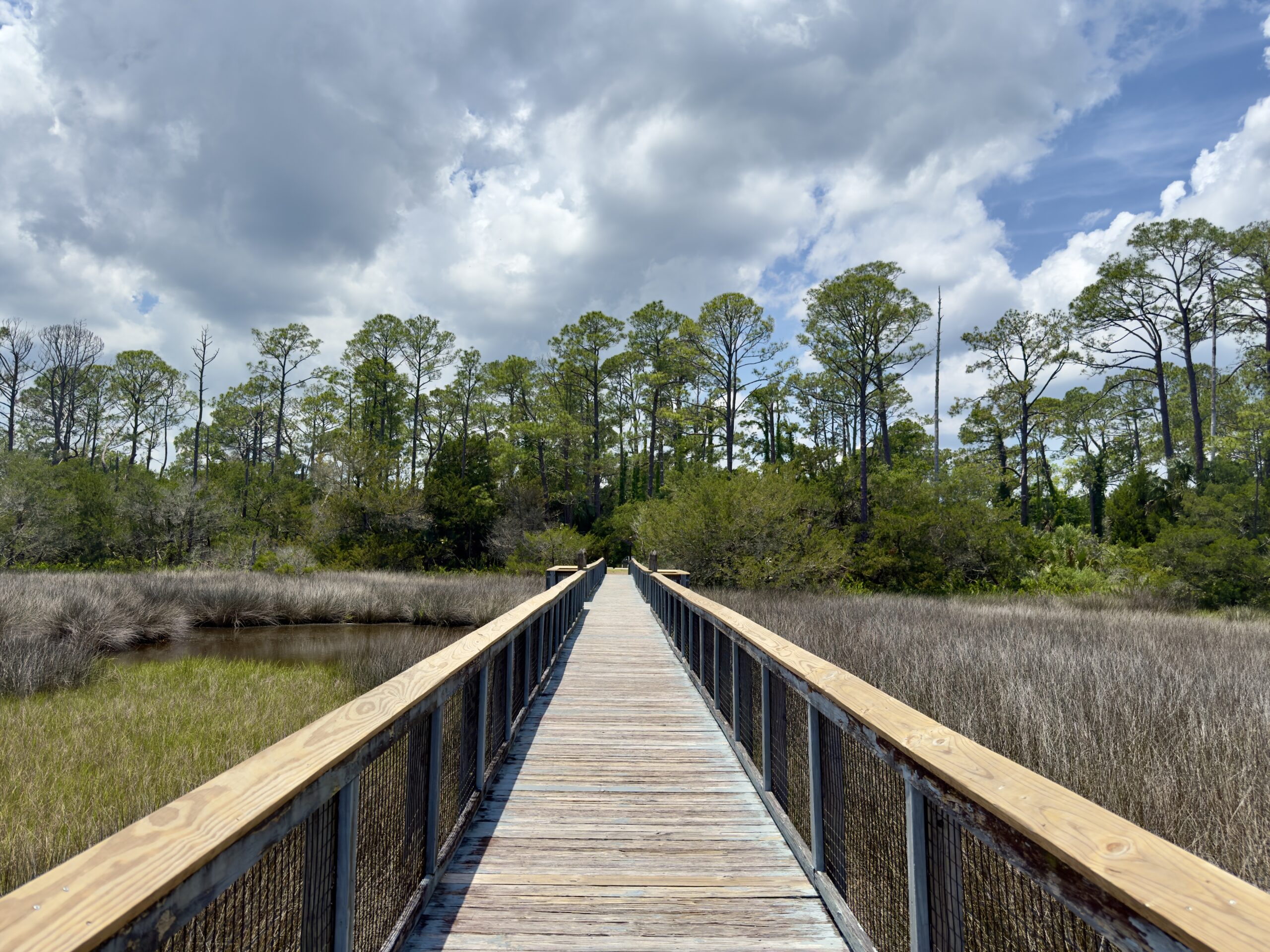
Further along, the park’s “Walkway to Freedom” offers a moment of quiet reflection.
The raised boardwalk stretches over the marshlands. This spot is a favorite for birdwatchers, who come armed with binoculars to catch sight of the 107 bird species found here. On my visit, I was in awe watching a Roseate Spoonbill, gracefully wading through the shallow waters, while egrets soared overhead.
For those eager to learn more, the park also offers guided bird walks every month—perfect for deepening your connection to this ecosystem.
The Visitor Center: A Welcome Pause
If you visit on a hot day (and chances are, you will), the museum inside the Fort Mose visitor center offers a cool, thoughtful space to learn more. It doesn’t rush you—it welcomes you. Inside are well-curated displays, interactive audio triggers, and a short video featuring Yamasee, English, and Spanish speakers pronouncing the same words in their own languages, a subtle but powerful nod to the multilingual, multicultural community that once called this place home.
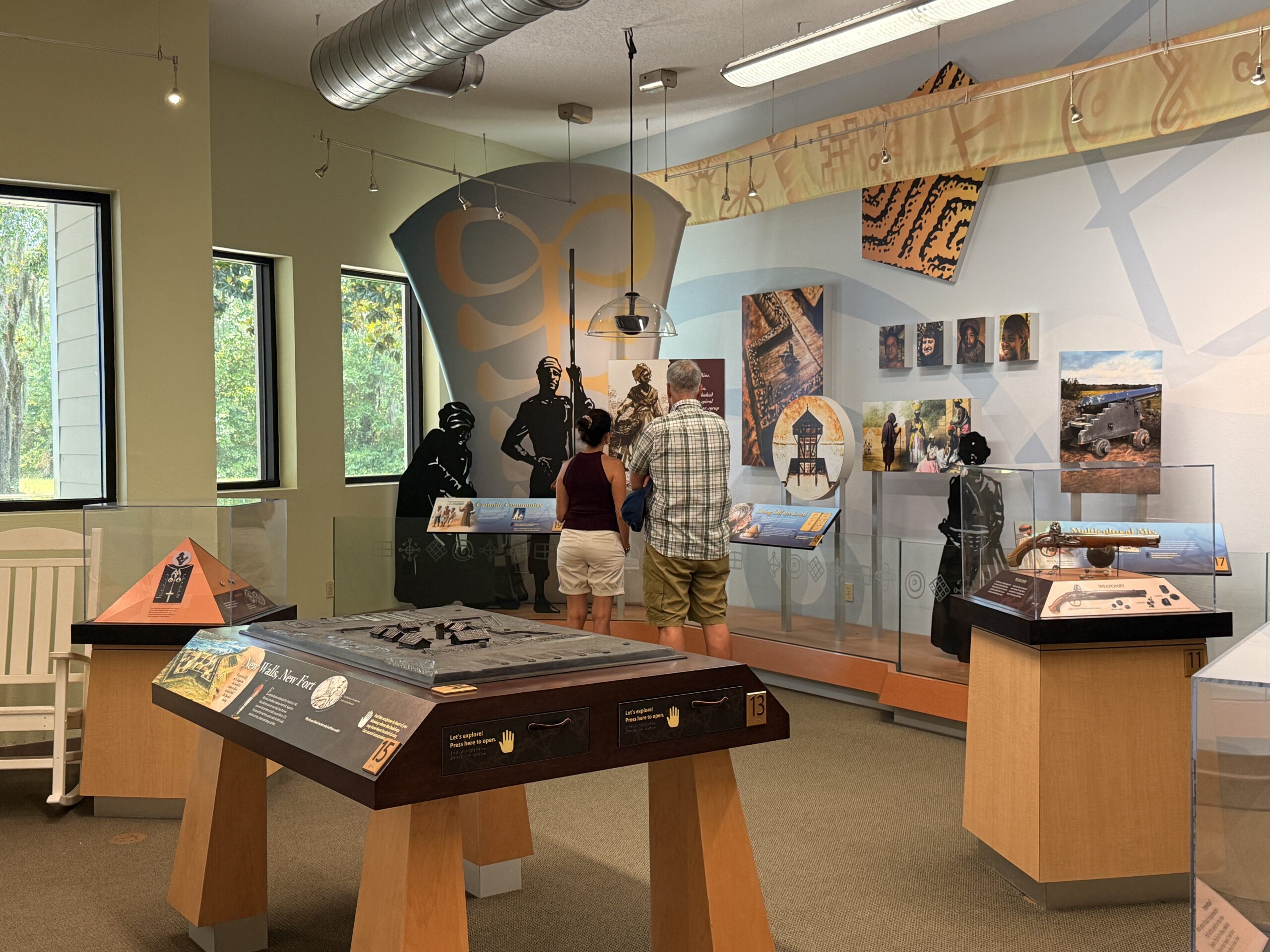
It’s a must-visit for anyone interested in history, language, and how diverse communities come together in resistance and resilience.
Visiting Fort Mose reminds us that the pursuit of freedom didn’t begin—or end—with a single date. It’s a story that continues to unfold, shaped by those who came before us and carried forward by those still fighting for justice today.
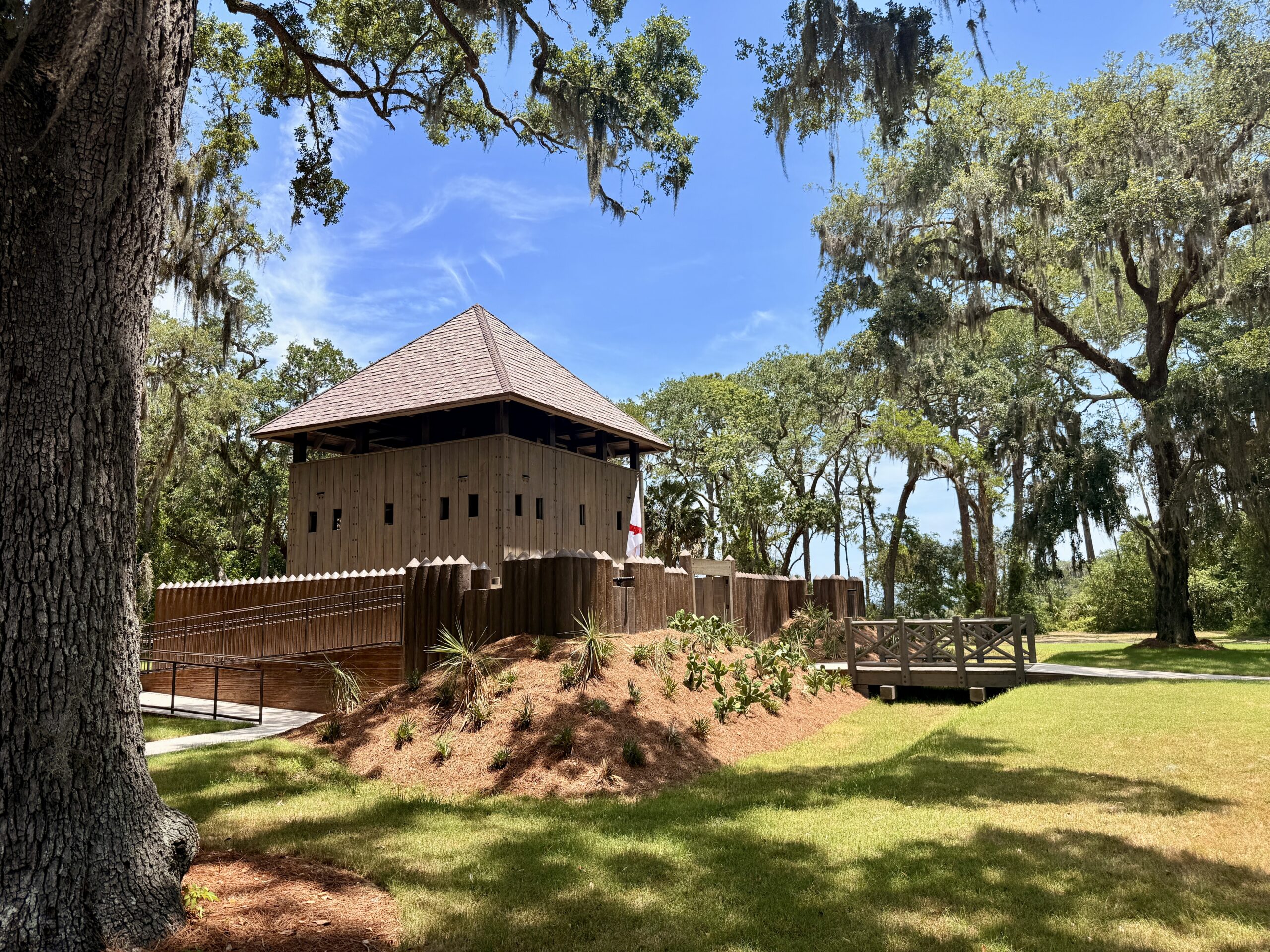
This Juneteenth, may we celebrate not just in silent reflection, but in vibrant community—in the messy, beautiful, ongoing work of being truly free.
Fort Mose: Quick Guide for Visitors
- The park is open year-round, daily from 9 a.m. to 5 p.m., with free admission to the grounds.
- Guided tours of Fort Mose run from Thursday to Monday at 10 a.m. and 1 p.m., lasting about 60 minutes.
- The visitor center, museum, and fort are closed on Tuesdays and Wednesdays. Admission is $2 per adult.


